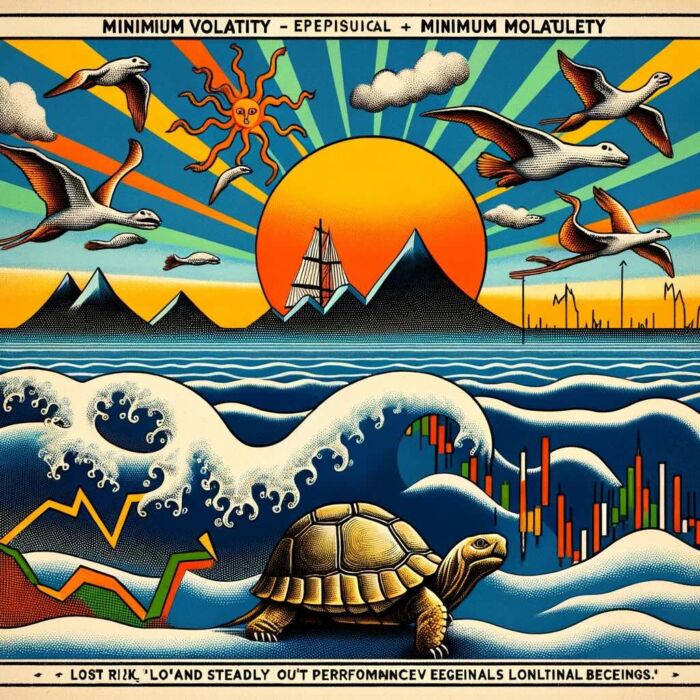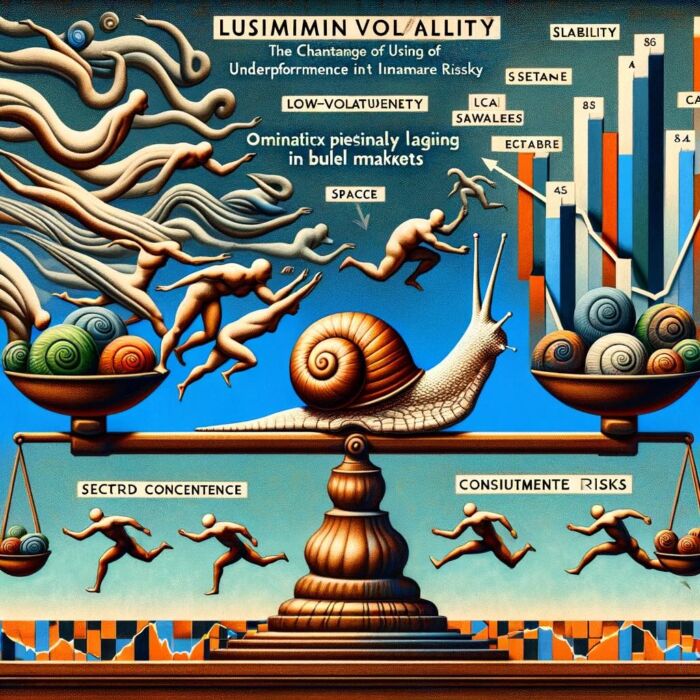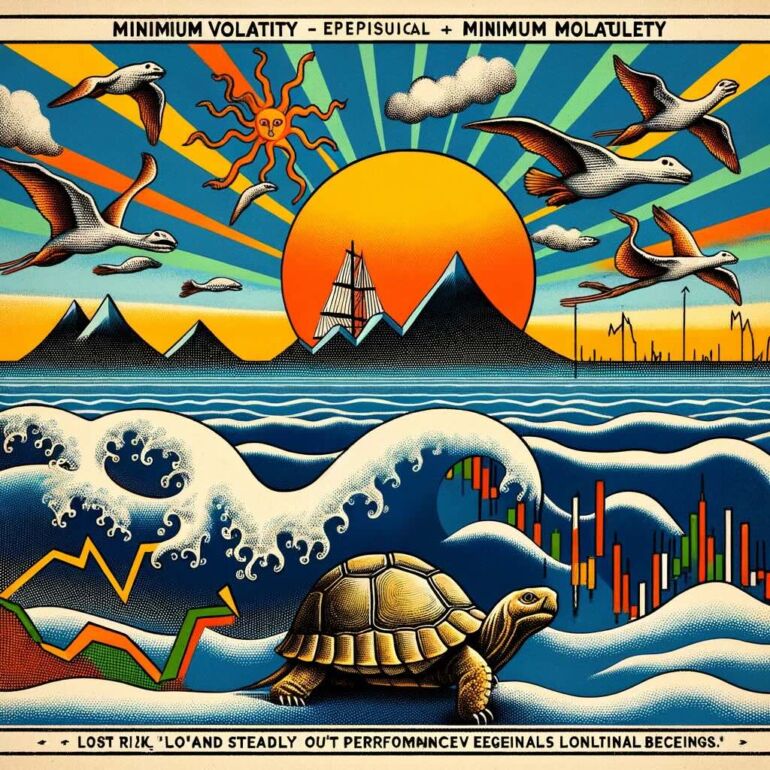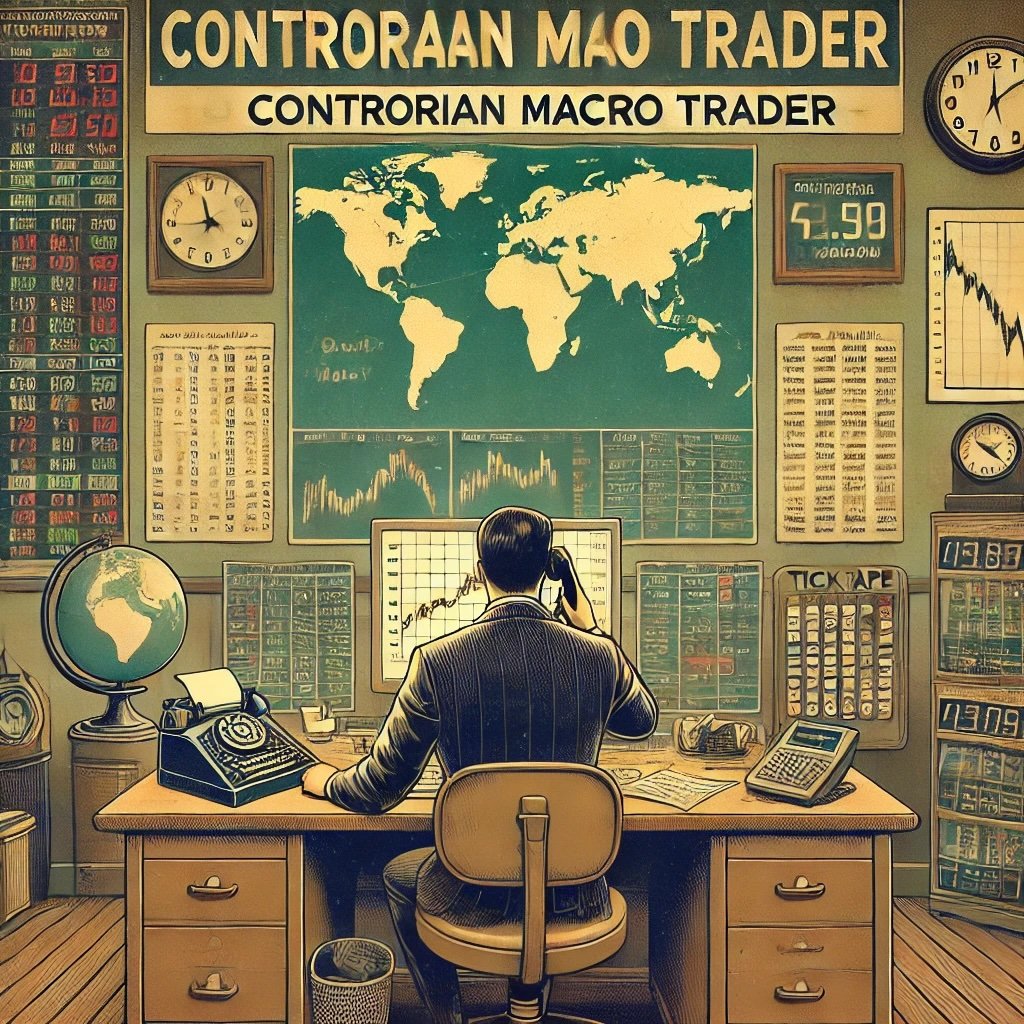In the sophisticated landscape of financial investing, one methodology that has notably gained ground is factor investing. Predicated on harnessing identifiable attributes or ‘factors’ that are instrumental in influencing asset prices, factor investing forms the cornerstone of modern portfolio theory. These factors are the key drivers of risk and return within a given investment portfolio. By embracing a rule-based and systematic approach, factor investing allows investors to decipher the intricacies of complex investment portfolios, breaking them down into more digestible and manageable units.

The Concept of Factor Investing
Among the plethora of factors that seasoned investors have recognized and employed, including but not limited to value (stocks priced less than their intrinsic value), size (smaller companies yielding higher returns), momentum (trends in stock price movement), and quality (companies with robust financial health), one factor that stands out for its counterintuitive appeal is ‘minimum volatility.’

An Introduction to the Minimum Volatility Factor
Minimum volatility,’ or as some might prefer to call it, ‘low volatility,’ factor investing is an approach that focuses on capital allocation into stocks that have demonstrated a lower total volatility compared to the broader market indices. Here, ‘volatility’ refers to the statistical measure of the degree of variation in a security’s trading price observed over a particular period. It encapsulates the extent to which the price of an asset or a market index fluctuates for a set of returns. Consequently, ‘minimum volatility’ points to the relative steadiness of a security’s price over time.
The intrigue of minimum volatility as a factor lies in its propensity to yield substantial gains by curbing the risk associated with larger price swings. This attribute situates minimum volatility as a particularly compelling strategy, striving to find an equilibrium between the dual aspirations of risk and return that lies at the heart of all investment endeavors. Therefore, minimum volatility as a factor occupies an integral place in an effective investment strategy, particularly for those investors whose risk appetite leans towards the conservative side.

Understanding Minimum Volatility
Defining Minimum Volatility
In the intricate domain of investment, ‘volatility’ signifies the extent to which the price of a security or market index fluctuates for a set of returns over a specified period. It is a quantitative measurement of the degree of variation, expressed statistically, that encapsulates the dispersion of returns for a given security or market index. In essence, volatility, often measured using standard deviation or variance between returns, illuminates the instability of market prices and the potential risk or uncertainty an investor must contend with.
‘Minimum volatility,’ then, as the terminology suggests, refers to the investment strategy that entails the pursuit of securities demonstrating the least amount of volatility, or in other words, securities that showcase relative price stability over time. The emphasis here is on a portfolio of securities that, collectively, exhibit lower total volatility compared to the overall market.

The Significance of Minimum Volatility in Investing
The precept of minimum volatility assumes critical importance in the broader narrative of investing for a number of compelling reasons.
Primarily, minimum volatility serves as a powerful risk management tool. Investors, particularly those with a lower risk tolerance, gravitate towards minimum volatility as it provides an effective mechanism to mitigate potential losses stemming from significant market swings. By investing in low-volatility securities, investors aim to create a portfolio that absorbs market shocks with greater resilience, thereby reducing the likelihood of severe drawdowns.
Moreover, the minimum volatility factor also holds potential for enhanced risk-adjusted returns. Empirical research suggests that low-volatility stocks have often outperformed their high-volatility counterparts over the long term, defying the conventional wisdom that higher risk necessitates higher return. This phenomenon, known as the ‘low volatility anomaly,’ posits that risk-averse investors can capitalize on the systematic underpricing of low-volatility stocks.
Furthermore, minimum volatility can lend stability to a portfolio during turbulent market phases. During periods of heightened market volatility, low-volatility stocks typically experience smaller price declines, helping to preserve capital.
Ultimately, the importance of minimum volatility as an investment factor lies in its dual capacity to curtail potential downside while preserving the prospect of attractive returns, thus allowing investors to navigate the treacherous waters of the market with a greater sense of security and composure.
source: Motilal Oswal Asset Management on YouTube
How Minimum Volatility Works in Factor Investing

Mechanics of the Minimum Volatility Factor
In the world of factor investing, minimum volatility operates as a strategy that focuses on securities demonstrating relative stability in their price movements over a specified timeframe. Essentially, it involves creating a portfolio of securities that, when viewed in aggregate, exhibit lower overall volatility compared to a broad market index.
The process commences with the identification and selection of such securities. Typically, this involves sophisticated statistical analysis to determine the standard deviation or variance in returns for a wide array of securities. Those demonstrating lower historical volatility are then incorporated into the portfolio.
This strategy often leads to a portfolio dominated by ‘defensive’ or ‘non-cyclical’ stocks – those businesses that are generally more insulated from the economic cycle. These could include companies from sectors such as utilities, consumer staples, or healthcare, whose products and services are consistently in demand, regardless of economic fluctuations.

Interplay Between Minimum Volatility and Market Conditions
The efficacy of a minimum volatility strategy is often closely tied to prevailing market conditions. During periods of increased market turbulence and heightened uncertainty, low volatility stocks typically exhibit resilience and outperform their more volatile counterparts.
This resilience can be attributed to their defensive nature. As they are less tied to the economic cycle, their earnings tend to be more stable and predictable, which is often rewarded by the market during periods of uncertainty. Conversely, during bull markets, when investor sentiment is high, minimum volatility stocks may underperform as investors chase higher risk, and potentially higher return, investments.
The Crucial Role of Minimum Volatility in Risk Management
Minimum volatility serves as an indispensable tool in the broader scheme of risk management within an investment portfolio. By its very design, a minimum volatility strategy seeks to mitigate downside risk. The core idea is to construct a portfolio that offers a smoother ride during turbulent times, potentially minimizing the magnitude of drawdowns and providing a level of capital preservation.
This risk dampening effect, coupled with the potential for steady returns, can result in a favorable risk-adjusted return profile. Therefore, minimum volatility strategies can provide a powerful means of achieving investment objectives for risk-averse investors or those nearing their investment goals who might wish to limit their exposure to unexpected market downturns.
By effectively managing risk while still providing a path for returns, minimum volatility plays an instrumental role in enhancing the overall robustness and stability of an investment portfolio.
source: The Rational Reminder Podcast on YouTube
Benefits of Using Minimum Volatility in Factor Investing

Diminishing Portfolio Risk
Perhaps the most immediate advantage of a minimum volatility approach is the potential reduction in portfolio risk. By investing in assets that demonstrate lower volatility, investors can better insulate their portfolios from extreme market fluctuations, thereby reducing the possibility of severe drawdowns. In essence, a minimum volatility strategy aims to soften the blow of market downturns, ensuring a relatively smoother and less erratic investment journey. This phenomenon of reduced portfolio risk aligns with the axiom of finance that diversification—here, across less volatile assets—can lead to risk mitigation.
Prospects for Enhanced Risk-Adjusted Returns
An intriguing facet of minimum volatility investing is the potential for improved risk-adjusted returns. As an anomaly in the world of finance, low-volatility stocks have historically shown a propensity to deliver higher returns than their more volatile counterparts over the long term—a phenomenon that flies in the face of the traditional risk-return tradeoff that equates higher potential returns with a higher degree of risk. In addition, the lower volatility of these investments also often results in lower standard deviations, leading to higher Sharpe ratios—a common measure of risk-adjusted performance. Therefore, minimum volatility investing can provide attractive returns, considering the level of risk taken.

Suitability for Conservative Investors and Market Downturns
Another noteworthy benefit of using minimum volatility in factor investing is its suitability for conservative investors, those nearing their investment goals, or in the midst of market downturns. For investors with a lower risk tolerance or those seeking to preserve capital as they approach their investment goals, a minimum volatility approach offers a way to participate in market gains while limiting potential downside.
Moreover, during turbulent market phases, when market volatility is high, minimum volatility strategies can offer a haven. Since low-volatility stocks are often found in defensive sectors, they are generally more resilient in the face of market downturns. Their relatively stable earnings, irrespective of the economic climate, make them particularly attractive during periods of market stress, helping to mitigate portfolio losses when markets are in turmoil.
In summary, minimum volatility investing, with its emphasis on risk management and potential for superior risk-adjusted returns, offers a compelling strategy for a wide range of investors, particularly those seeking a smoother ride in an often tumultuous market.
source: Excess Returns on YouTube
Implementing Minimum Volatility in Your Investment Strategy

The Art of Identifying Low Volatility Stocks
Implementing a minimum volatility strategy begins with the identification of low-volatility stocks. These are stocks that demonstrate less drastic price fluctuations over time compared to the market average. Several quantitative measures can assist in this identification, such as standard deviation, beta, and average true range, among others.
Standard deviation measures the dispersion of a set of data from its mean, or in this case, the degree to which a stock’s price deviates from its average price. A lower standard deviation implies less price volatility. Beta, on the other hand, gauges a stock’s volatility in relation to the overall market. A beta less than one indicates lower volatility than the market, making it a potentially suitable candidate for a minimum volatility portfolio.
In addition to these measures, investors should consider the stock’s sector and industry. As previously noted, companies within defensive sectors, such as utilities, healthcare, or consumer staples, often exhibit lower volatility due to their relatively stable earnings streams, irrespective of economic conditions.

The Role of Diversification in Achieving Minimum Volatility
Diversification is a key tenet of a minimum volatility strategy. The objective is not only to hold low-volatility stocks but also to diversify across sectors and geographic regions to further spread risk. Diversification can help offset sector- or region-specific risks and contribute to achieving an overall lower portfolio volatility.
In practice, this might mean constructing a portfolio with low-volatility stocks from various sectors and regions, ensuring no single sector or region dominates the portfolio. This strategy can further dampen portfolio volatility and contribute to more stable returns over time.
Leveraging ETFs and Index Funds for a Low-Volatility Strategy
In the modern investment landscape, Exchange Traded Funds (ETFs) and index funds play a crucial role in implementing a minimum volatility strategy. These investment vehicles allow investors to gain exposure to a diversified portfolio of low-volatility stocks with a single transaction, thus simplifying the process and lowering transaction costs.
Several ETFs and index funds specifically target low-volatility stocks, such as those based on the MSCI Minimum Volatility Indices or the S&P 500 Low Volatility Index. These funds construct portfolios that optimize for the lowest possible volatility based on historical data, providing investors an efficient and cost-effective means to implement a minimum volatility strategy.
Therefore, whether you are a seasoned investor or just starting your investment journey, incorporating a minimum volatility approach into your investment strategy can prove to be a valuable tool for managing risk and potentially enhancing risk-adjusted returns.
source: Excess Returns on YouTube
Real-World Examples of Minimum Volatility Factor Investing

Case Studies of Successful Minimum Volatility Investing
To appreciate the potential of minimum volatility investing, consider the success of some well-known low-volatility ETFs. One such example is the iShares Edge MSCI Min Vol USA ETF (USMV). As of late 2022, this ETF demonstrating the anomaly of achieving superior risk adjusted returns with lower volatility.
The fund, designed to select stocks from the USA MSCI Index with the lowest absolute volatility, demonstrates how a meticulously curated and managed low-volatility portfolio can result in performance surpassing broader market indices, while maintaining lower risk levels.
Another example is the Invesco S&P 500 Low Volatility ETF (SPLV), which targets the 100 least volatile stocks in the S&P 500. Despite its conservative approach, the fund has shown competitive performance against the broader S&P 500, further illustrating the potential of minimum volatility investing.

Performance of Minimum Volatility Factor in Different Market Conditions
The performance of the minimum volatility factor can vary with market conditions. During bull markets or periods of economic expansion, low-volatility strategies may underperform the broader market due to their defensive nature. High-growth and high-risk sectors typically lead the market in such conditions, rendering lower-volatility stocks less attractive.
However, in bear markets or during economic downturns, minimum volatility strategies often shine. As investors become more risk-averse, the flight to safer, less volatile stocks can result in these strategies outperforming the broader market. For instance, during the financial crisis of 2008, low-volatility strategies were generally more resilient, losing less value than the broader market.
Furthermore, during the pandemic market crash in March 2020, low-volatility stocks again demonstrated their resilience. For instance, the iShares Edge MSCI Min Vol USA ETF (USMV) declined less than the S&P 500, thereby underscoring the value of a minimum volatility strategy during periods of market stress.
In summary, while the performance of minimum volatility strategies may oscillate with changing market conditions, their inherent strength lies in their defensive nature and ability to provide a level of downside protection in volatile markets. The power of this approach can be particularly potent for those with a longer investment horizon, a lower risk tolerance, or a desire for a smoother investment journey.
source: Millenial Investing on YouTube
Common Misconceptions about Minimum Volatility

Clarification on the Idea that Low Volatility Equals Low Returns
A common misconception surrounding low volatility investing is the belief that it invariably leads to low returns. This perception likely stems from the basic risk-reward principle suggesting that taking on higher risk should yield higher potential rewards. However, in practice, low-volatility stocks have often provided competitive returns compared to higher-volatility counterparts.
The low volatility anomaly, a concept prevalent in academic literature, contradicts the conventional risk-return tradeoff. It refers to the phenomenon where low-volatility stocks, contrary to theoretical expectations, have outperformed high-volatility stocks on a risk-adjusted basis. This anomaly suggests that investing in less volatile stocks does not necessarily imply sacrificing returns.
Moreover, studies show that low-volatility portfolios have often performed well during market downturns, limiting losses when compared to the broader market. These periods of outperformance can contribute significantly to long-term returns, owing to the mathematical principle that reducing downside loss has a substantial impact on compound growth.

Market Timing and Low-Volatility Investing
Another misconception pertains to the idea that minimum volatility investing requires precise market timing to be effective, namely, that one must switch to low-volatility stocks right before a market downturn and then switch back to high-volatility stocks before a market upswing. However, this view can oversimplify and misrepresent the nature of minimum volatility investing.
Market timing is notoriously difficult, if not impossible, to do consistently over time. Instead of attempting to time the market, minimum volatility investing focuses more on building a portfolio that can weather various market conditions over the long term.
The strategy’s main advantage lies in its defensive nature, offering potential downside protection during market downturns. But even during periods of market growth, low-volatility portfolios can provide competitive returns, making them a suitable long-term strategy rather than a market-timing tool.
Low-volatility investing is about understanding and exploiting the low volatility anomaly for potential risk-adjusted returns, and not about predicting short-term market movements. As with any investment strategy, investors should consider their risk tolerance, investment goals, and time horizon before choosing to adopt a minimum volatility strategy.
Challenges in Using Minimum Volatility in Factor Investing

Understanding the Limits of Minimum Volatility
Despite the potential benefits of a minimum volatility strategy, it’s important to acknowledge that it isn’t a universal panacea for all investment goals or market conditions. Understanding its limitations is crucial for appropriately implementing it in an investment portfolio.
One such limitation is that low-volatility stocks may lag in bull markets or during economic upswings. As investors flock to riskier, high-growth stocks during these periods, the defensive nature of low-volatility stocks can cause them to underperform relative to the broader market. While they may provide competitive returns over the long term, there can be periods of relative underperformance.
Additionally, minimum volatility strategies may also fall prey to sector concentration risks. For instance, during periods of low market volatility, these strategies may become heavily weighted towards traditionally defensive sectors, such as utilities or consumer staples. Such concentration could leave the portfolio exposed to sector-specific risks and may limit its diversification benefits.

Potential Risks and Downsides of Min Vol
Even though a minimum volatility strategy aims to limit risk, it is not without its own set of potential risks and downsides. One of these risks is valuation risk. Low-volatility stocks, due to their defensive nature, can become overvalued, especially during periods of market uncertainty when investors are seeking safer investments. High valuations could limit future return potential and may increase the risk of losses if the valuations revert towards the mean.
Another risk is interest rate sensitivity. Low-volatility stocks often have a higher dividend yield and can, therefore, be more sensitive to changes in interest rates. If interest rates rise, these stocks may become less attractive to investors seeking income, which can put downward pressure on their prices.
Furthermore, investors must be wary of the potential for a “crowding” effect. As more investors become aware of the low volatility anomaly and seek to exploit it, the increased demand for low-volatility stocks could lead to inflated prices and reduced future return potential.
While minimum volatility strategies offer a compelling approach to managing risk and potentially enhancing risk-adjusted returns, investors must be mindful of their limitations and potential risks. As always, due diligence and an understanding of one’s investment objectives and risk tolerance are essential when considering any investment strategy.
source: Excess Returns on YouTube
Comparing Minimum Volatility to Other Factors

Comparison with Factors such as Value, Size, and Momentum
Minimum volatility is but one element in the pantheon of factors investors can harness to potentially enhance portfolio returns and manage risk. To appreciate its place in this spectrum, it’s helpful to compare it to other prominent factors like value, size, and momentum.
Value investing, the strategy of buying stocks that appear underpriced relative to their intrinsic value, has long been a staple in many investors’ toolkits. However, value stocks, by their very nature, often come with a higher degree of risk. They’re cheap for a reason, and that reason often involves some element of business or financial distress. Therefore, while value can offer high return potential, it generally comes with higher volatility.
The size factor, which posits that smaller companies can offer higher return potential, similarly embodies a risk-return tradeoff. Small-cap stocks, while providing avenues for robust growth, often come with a higher volatility profile due to business uncertainties and market illiquidity.
Momentum investing, which involves buying stocks that have been trending upwards, has a unique risk profile. While it can be profitable during periods of sustained market trends, it can also suffer during periods of abrupt market reversals. Its performance can be quite volatile, depending on market conditions.
In comparison, a minimum volatility strategy aims to deliver smoother returns and limit downside risk, making it particularly suited for conservative investors or those nearing retirement. While it might underperform other factors during market upswings, it is less likely to suffer severe losses during downturns.

Situations Where Minimum Volatility Might Be More Beneficial
While each factor can play a valuable role under certain market conditions or within a particular investment strategy, minimum volatility might be particularly beneficial in some situations.
In volatile or declining markets, a minimum volatility strategy could help protect the portfolio by limiting downside risk. When markets are turbulent, low-volatility stocks are likely to fall less than high-volatility ones, potentially safeguarding portfolio value.
For risk-averse investors or those with a shorter time horizon (such as retirees or near-retirees), a minimum volatility strategy can provide exposure to equity markets while mitigating the risk of severe losses. This can make it an attractive option for those seeking a more conservative equity investment.
Additionally, in an environment of low interest rates where bonds might not provide sufficient income, a minimum volatility strategy might be appealing due to the often higher dividend yields associated with low-volatility stocks.
Nevertheless, it’s important to note that a minimum volatility strategy should not be viewed as a standalone solution, but rather as a part of a broader, well-diversified portfolio. Each factor, including minimum volatility, has periods of outperformance and underperformance, and a well-diversified portfolio can help smooth out these cycles and enhance risk-adjusted returns over time.
The Role of Minimum Volatility in a Diversified Portfolio

How Minimum Volatility Contributes to Portfolio Diversification
Minimum volatility plays a vital role in portfolio diversification, serving as an effective counterbalance to other higher-volatility assets. While diversification across different asset classes – equities, fixed income, commodities, real estate, etc. – is a fundamental tenet of portfolio construction, diversification within an asset class, especially equities, is equally important.
By nature, low-volatility stocks tend to be less correlated with the broader market, which can help dampen portfolio swings and provide a smoother return path. Their inherent defensive characteristics make them less sensitive to market downturns. Consequently, during periods of market turbulence, they can serve as a safe harbor, helping to limit losses and stabilize the overall portfolio.
Moreover, many low-volatility stocks are often associated with stable, profitable companies that frequently pay dividends. These dividends can provide a steady income stream, further enhancing portfolio stability during volatile or down markets. Hence, adding a minimum volatility component can not only reduce portfolio risk but also potentially augment income, both of which can be especially beneficial for conservative investors or those in the decumulation phase of their investment life cycle.
Balancing Minimum Volatility with Other Factors
While the merits of minimum volatility are compelling, a well-balanced portfolio should incorporate a mix of factors to navigate different market environments effectively. As such, it’s prudent to consider how minimum volatility integrates with other factors like value, size, momentum, and quality.
As discussed earlier, each factor tends to perform differently under varying market conditions and economic cycles. For instance, value and size factors might outperform during economic expansions when investor sentiment is bullish, whereas minimum volatility might shine during economic contractions or bear markets. Similarly, the momentum factor can provide strong returns during sustained market trends but might falter during market reversals.
In light of this, investors might consider a multi-factor approach, combining minimum volatility with other factors to enhance diversification and risk-adjusted returns. The idea is to balance out the periods of underperformance of one factor with the outperformance of another, thus providing a more stable and resilient portfolio over time.
Such a diversified factor strategy necessitates a thorough understanding of each factor’s risk-return characteristics and their interactions. Moreover, it requires periodic portfolio review and rebalancing to maintain the desired factor exposures. Employing such a comprehensive, thoughtful approach can help investors effectively harness the power of minimum volatility, and other factors, in pursuit of their long-term financial goals.

Minimum Volatility in Different Asset Classes
When exploring minimum volatility as an investing strategy, it is imperative to understand that different asset classes can exhibit distinct volatility characteristics, thereby influencing the strategy’s performance and effectiveness.
Minimum Volatility in Bonds, Equities, and Commodities
Equities, for instance, are renowned for their substantial return potential; however, they can be more volatile than other asset classes. Consequently, the minimum volatility factor can be particularly valuable in an equity portfolio, reducing risk and providing potentially smoother returns. Certain sectors, like utilities or consumer staples, often demonstrate lower volatility as they represent essential goods and services, which consumers purchase regardless of economic conditions.
Bonds, conversely, inherently have lower volatility than equities. Their prices are largely influenced by interest rates and credit quality. In this context, minimum volatility might involve a focus on government or high-grade corporate bonds, which tend to be more stable than lower-quality, high-yield bonds. Implementing a minimum volatility strategy in a bond portfolio might also involve duration management, as bonds with longer durations can be more volatile in response to interest rate changes.
Commodities, on the other hand, can be highly volatile, with prices driven by supply and demand dynamics, geopolitical events, and macroeconomic factors. However, certain commodities might offer a lower volatility profile. For instance, agricultural commodities, while influenced by weather and crop conditions, might not be as volatile as energy commodities, which can be heavily swayed by political uncertainties.

How Different Asset Classes Affect the Implementation of a Minimum Volatility Strategy
The implementation of a minimum volatility strategy can vary significantly across asset classes due to their differing risk-return profiles, market dynamics, and underlying factors.
In an equity portfolio, for example, implementing a minimum volatility strategy might involve selecting stocks from typically defensive sectors or those with low beta, a measure of a stock’s sensitivity to market movements. It could also involve diversification across different sectors and geographical markets to mitigate unsystematic risk.
In a bond portfolio, on the other hand, the strategy could revolve around selecting bonds with higher credit quality, shorter durations, or those from stable, developed markets. It could also involve strategies such as laddering, where bonds mature at different times, reducing the impact of interest rate changes.
For a commodities portfolio, the strategy might involve a careful selection of commodities based on their historical volatility and correlation with other assets. Diversification is also crucial to manage the unique risks associated with commodities investing.
Therefore, the asset class context is critical in crafting and executing a minimum volatility strategy. Understanding these differences can help investors tailor their approach to achieve their desired risk-return objectives, paving the way for a more resilient and successful investment experience.

Conclusion: Minimum Volatility in Factor Investing
As we reach the terminus of this comprehensive exploration of minimum volatility in factor investing, it becomes apparent that minimum volatility is more than just a passing fancy in the world of finance. Instead, it holds a significant place, acting as a robust, empirical factor with the potential to enhance portfolio construction and risk-adjusted returns, particularly in tumultuous markets.
Throughout this article, we have delved deep into the underpinnings of minimum volatility, unraveling its nuances and dispelling the common misconceptions associated with it. We’ve learned that minimum volatility doesn’t necessarily equate to low returns, and it’s far from a one-size-fits-all solution. Its effectiveness hinges on market conditions, portfolio construction, and, importantly, its implementation alongside other factors in a diversified portfolio.

Investors Investment Goals When Considering Minimum Volatility Investing
The merits of minimum volatility are compelling, but as with any investment strategy, it’s crucial to apply it in a manner that aligns with one’s risk tolerance, investment horizon, and financial objectives. A strategy built on minimizing volatility may be eminently suitable for risk-averse individuals, those nearing retirement, or investors in bearish or volatile markets. However, those with a higher risk tolerance or a longer investment horizon might consider employing minimum volatility as one component of a diversified factor strategy.
Ultimately, the journey into the realm of minimum volatility underscores the importance of a thoughtful, well-informed approach to investing. Investors, whether novice or seasoned, are urged to seek a deep understanding of the factors that drive returns and the tools available to manage risk. By mastering the art and science of factor investing, and specifically appreciating the role of minimum volatility, investors can navigate the complex financial markets with greater confidence and precision, bringing them one step closer to achieving their financial goals.
In the final analysis, the world of factor investing is as dynamic as it is intriguing. The minimum volatility factor serves as a testament to this, shining a light on the remarkable potential that lies in sophisticated investment strategies. It’s a compelling reminder of the power of finance, and the vital role it plays in shaping our financial futures.
Important Information
Comprehensive Investment Disclaimer:
All content provided on this website (including but not limited to portfolio ideas, fund analyses, investment strategies, commentary on market conditions, and discussions regarding leverage) is strictly for educational, informational, and illustrative purposes only. The information does not constitute financial, investment, tax, accounting, or legal advice. Opinions, strategies, and ideas presented herein represent personal perspectives, are based on independent research and publicly available information, and do not necessarily reflect the views or official positions of any third-party organizations, institutions, or affiliates.
Investing in financial markets inherently carries substantial risks, including but not limited to market volatility, economic uncertainties, geopolitical developments, and liquidity risks. You must be fully aware that there is always the potential for partial or total loss of your principal investment. Additionally, the use of leverage or leveraged financial products significantly increases risk exposure by amplifying both potential gains and potential losses, and thus is not appropriate or advisable for all investors. Using leverage may result in losing more than your initial invested capital, incurring margin calls, experiencing substantial interest costs, or suffering severe financial distress.
Past performance indicators, including historical data, backtesting results, and hypothetical scenarios, should never be viewed as guarantees or reliable predictions of future performance. Any examples provided are purely hypothetical and intended only for illustration purposes. Performance benchmarks, such as market indexes mentioned on this site, are theoretical and are not directly investable. While diligent efforts are made to provide accurate and current information, “Picture Perfect Portfolios” does not warrant, represent, or guarantee the accuracy, completeness, or timeliness of any information provided. Errors, inaccuracies, or outdated information may exist.
Users of this website are strongly encouraged to independently verify all information, conduct comprehensive research and due diligence, and engage with qualified financial, investment, tax, or legal professionals before making any investment or financial decisions. The responsibility for making informed investment decisions rests entirely with the individual. “Picture Perfect Portfolios” explicitly disclaims all liability for any direct, indirect, incidental, special, consequential, or other losses or damages incurred, financial or otherwise, arising out of reliance upon, or use of, any content or information presented on this website.
By accessing, reading, and utilizing the content on this website, you expressly acknowledge, understand, accept, and agree to abide by these terms and conditions. Please consult the full and detailed disclaimer available elsewhere on this website for further clarification and additional important disclosures. Read the complete disclaimer here.





